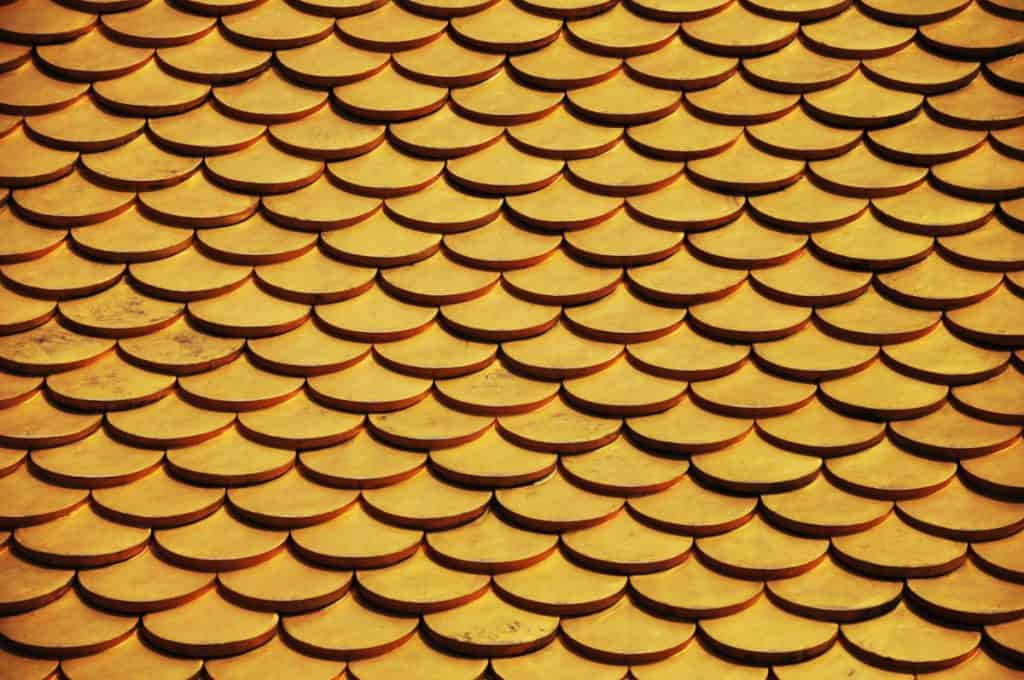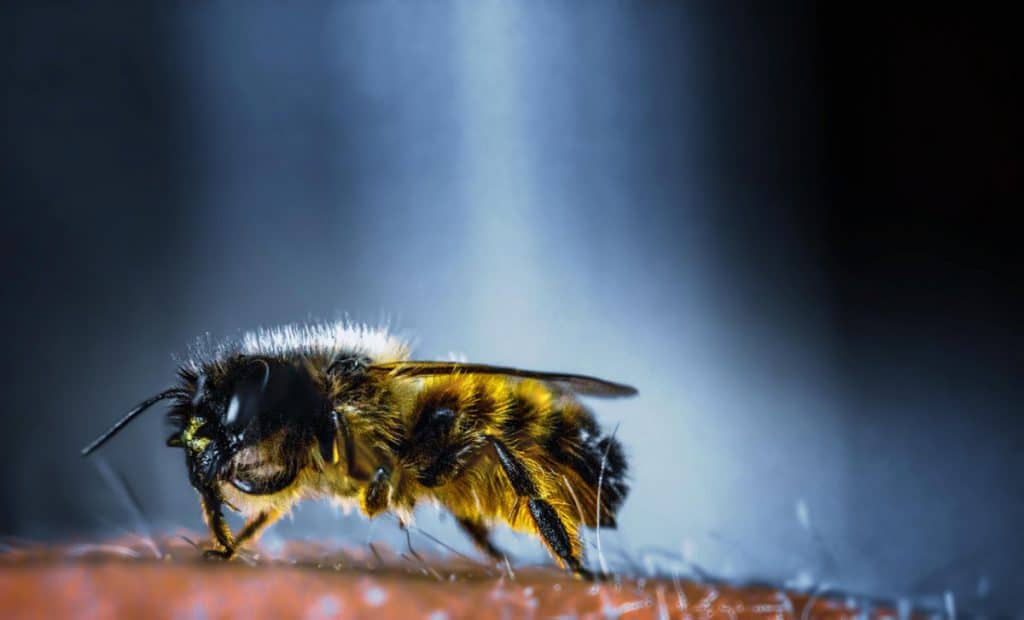If you enjoy reading this article, why not check out our articles on Best Insect Online Games & More! and Should You Kill Spiders? Short Answer: No
If you’ve studied Christianity and Judaism at all, you’ve probably heard of at least one reference to bugs. Each religion talks about several kinds of bugs, from bees to termites and ants. What does it mean, though? What’s their role? They serve as symbols for what we should and shouldn’t do.

Bugs Teach Us A Lesson
The prevalence of insects in the holy texts of both Christianity and Judaism gives us a way to visualize proper behavior in a way that’s easy to understand. When the Bible and the Torah were written, the world was a much more “real” place. The writers couldn’t make references to celebrities the same way we do today, making references to TV plots or books most of us read in high school; instead, they relied on making references to natural creatures that everyone in the earthly world was familiar with. These symbols teach us how to live a more godly life — in effect, they serve as examples to show us how to do what God wants us to do. They’re a simple way to show us how to behave as God-fearing people.

Locusts and the Plagues of Exodus and Revelations
Let’s start with the most common examples of bugs that both Christianity and Judaism adhere to: the ten plagues in the book of Exodus. You’ve probably heard of these plagues, even if you’ve had little to no traditional religious schooling. There are several plagues that utilize different types of insects as punishment, but the plague of locusts is the one that most novices can recognize with ease. This is the strongest symbol since it has a direct mirror in the Christian book of Revelations.
Firstly, Exodus 10:4-5 says that the locusts will eat everything left over after the previous plagues, leaving nothing for the Egyptian people after they thought they’d seen the worst of God’s wrath. If this doesn’t sound bad enough, Revelation takes it a step further. The last book of the Bible’s New Testament states that not only will the locusts wreak havoc on local agriculture and cattle, they will also have power the way scorpions have power. We all know how dangerous scorpions can be to humans — some are seriously deadly. In this instance, locusts were just as dangerous as a rival. Psalm11918.org draws the parallel between these two plagues that happen in vastly different time periods, but have obvious similarities. In each example, locusts are meant to show how powerful a punishment from God can be if you’ve angered Him for long enough.
The Book of Exodus is quite accurate in talking about a plague of locusts. Did you know that locusts form the largest swarm of any insect? No wonder it was a plague! Read more about locust swarms here: What is the Largest Insect Swarm?
Lice and Flies in the Old Testament
Looking at Exodus’ plagues again shows a few more bugs that are sent as punishment for not doing the Lord’s will. The Egyptians are met with swarms of lice and flies before they have to face the locusts. These specific plagues don’t have a mirror in the New Testament the way locusts do, but that doesn’t mean they’re any less important.

Each of these insects is small on their own, but mighty when part of a swarm — so mighty, in fact, that they can wreak havoc on the supposedly superior human race. This proves to symbolize that even though an enemy may be small, we should not underestimate it. Conversely, we should take solace in the fact that our enemies cannot beat us when we band together to do God’s will. For better or for worse, the bugs in the plagues of Exodus and Revelations show that we should never miscalculate what we can do in large numbers. If we have the support of the Lord’s will, there’s nothing we can’t accomplish, even if our enemy is many, many times our size.
The Positive Side of Bee Symbolism
To further prove the point of human mightiness when united for a common cause is the bee. Bees generally have a more positive connotation in both Christianity and Judaism, both of which focus on the bug and their product, honey (though Judaism focuses on the product far more, such as when referencing the Land of Milk and Honey).

The Ten Commandments say we should only serve one God, and bees do just that. We may call their leader a queen instead of a god, but nevertheless, the queen is meant to symbolize the Lord. A bee’s purpose within the hive is to serve and feed the queen. That’s it. The fact that the Old Testament talks about these insects so much only proves how important it is that we serve our Lord with as much dedication. When we do, the outcome will be deliciously sweet and rewarding — just like honey. This nectar is present in many of Judaism’s most sacred religious rituals, but keep in mind they don’t eat too much of it.
Bees Come with a Warning, Too
These two religions don’t just use bees to teach all the good that can happen from following God’s law — they’re also used to teach moderation. Yes, honey is sweet and symbolic of riches, but too much of anything leads us to become gluttons. Proverbs 25:27 says “It is not good to eat too much honey nor is it glorious to seek one’s own glory.” Christianity and Judaism’s holy texts both hold these warnings, but not as frequently as they show the more positive side of the bee analogy.

Both of these symbols together serve to teach us that serving God well will result in abundant rewards, but we shouldn’t get so focused on the sweet, earthy rewards that we forget to continue serving the Lord who gave us those perks in the first place. Don’t eat more than your fair share, and the Lord will continue to reward you. We can see some of this argument in the School of Bee’s publication about bee’s roles in both religions.
Serve One Leader, Like Ants and Termites Do
Ants and termites also serve a queen, so we can look to them for a similar kind of symbolism. Termites are generally seen as unclean, both in the Old and New Testaments and in our lives in the present day. Who do you know who rejoices when they hear termites are eating into their home’s foundation?
No one! It’s the same for Christianity and Judaism. In the literal sense, termites show up to eat all that you’ve worked so hard to build, and then they leave in search of more. They wreak havoc on all human buildings they come into contact with. Opposite of what they use bees for, both religions use termite bugs to show behavior we should not emulate. Termites work together, yes, but they don’t have one leading the way we should follow one God and are therefore used to symbolize worldly communities.
We actually can learn a lot from the way that bugs like ants and termites interact with one another. Our article How Strong Are Ants? discusses a few lessons we could learn from ants.
Though We Are Small, We Should Learn from God’s Wisdom
Lastly, let’s look at ants. Proverbs 30:24 says that even though ants are small, they’re “exceedingly wise.” Both religions adhere to this verse of the Old Testament, believing that we should also be wise. Christianity and Judaism both go on to highlight the fact that this wisdom should not come from ourselves, but from the holy texts.
The queen controls what the ants do, just as bees work together to keep the queen safe and fed, and just as we should work solely for the Lord and not for ourselves. Anyone who’s ever eaten anything knows that ants can find their way into even the most difficult places in search of food. For both religions, ants teach that we should be just as dedicated to finding God’s wisdom and living by its tenants.
The Insect’s Role is As A Teaching Symbol
There are endless examples of bugs and insects in the holy texts of Christianity and Judaism, from locusts, lice, and flies to bees and ants. All those references to these tiny creatures were put there for a reason: to symbolize to all believers what to do and not to do as we try to better follow the teachings of the Lord. Whether each specific bug signifies something positive or negative, one thing is the same throughout, and that’s the fact that the bugs are small on their own, but mighty when they work together. They can destroy our homes, eat our crops, livestock, and even our bodies, or they can feed us with sweet, tasty honey.

These creatures serve as the “to be or not to be” list of the two major religions. To emulate the bee and the ant, don’t be like the locust or the termite. The fact that each holy text highlights multiple examples of each creature serves to drive home that very important point. We should band together to serve our queen (read, Lord) because we can accomplish incredible feats when we decide to give up working on our own. One ant isn’t causing worry, and the alone bee cannot make any honey at all. But when they work together with their species to protect their homes and their queen, they can accomplish enormous feats, swarming to protect or creating a yummy treat. Put simply, the presence of such insects in the texts and rituals of these two major world religions is simple: to symbolize what we should and shouldn’t do.
If you enjoyed reading this article, why not check out our articles on What Are Scorpions Attracted To? Let’s Find Out and What are the Biggest Bugs in America?
Recent Posts
Tiny Black Bugs in Bathroom NO WINGS: What They Are and What to Do!
Finding tiny black bugs in your bathroom can be uncomfortable, to say the least. Especially if they are persistent, or they appear in very large numbers, which they often like to do. When it...
Tiny Black Bugs in Plant Soil - What Are They & What To Do About It
A short horror story: You get a new houseplant. You do your best to take care of it. You’ve ensured that it has the right soil, the right amount of sun, it gets enough water. And then one day, you...

